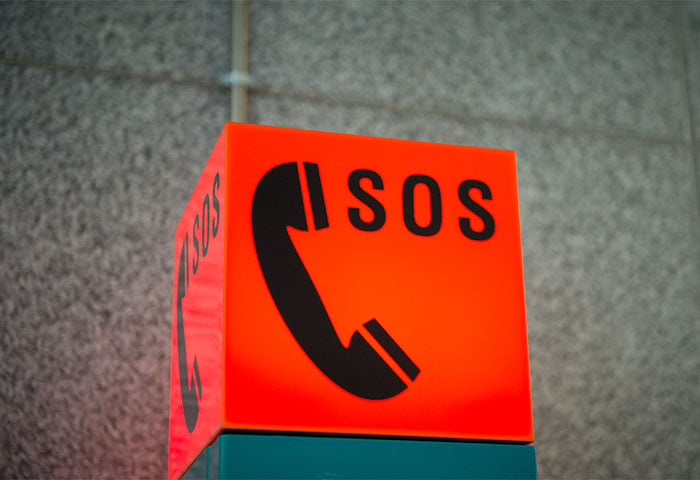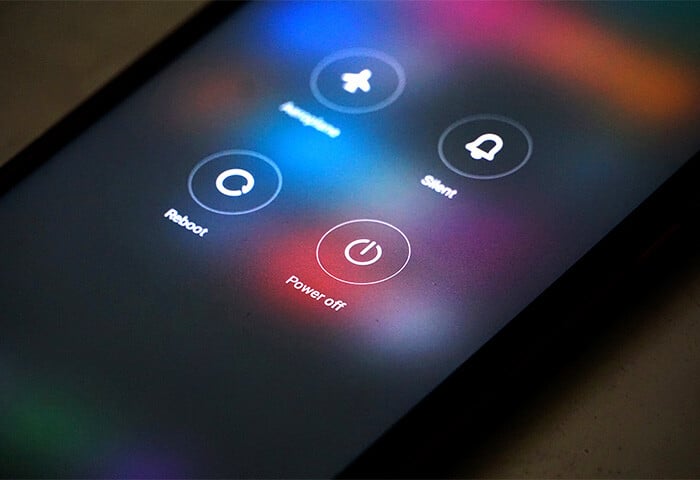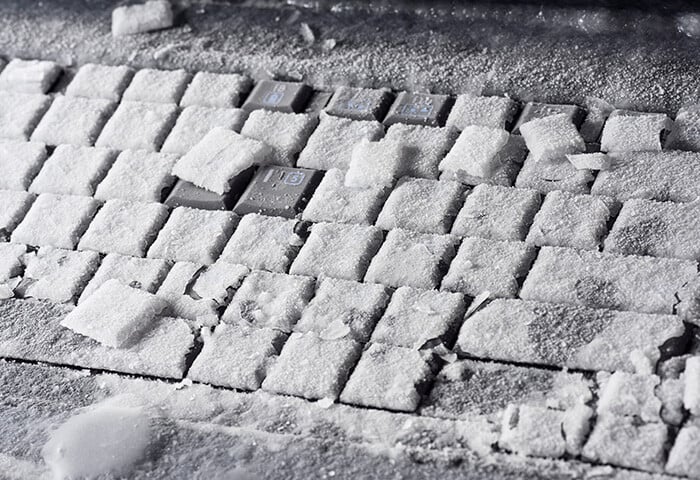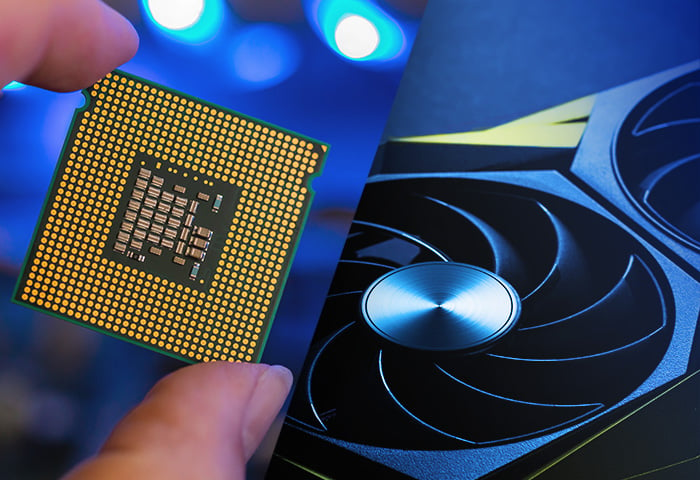Below, we’ll go through the most common reasons your Windows updates are failing and how to repair them, starting with the easiest fix to the most intense. If your Windows 10 or Windows 11 updates have failed to install, the fix might be quite simple. Keep reading to troubleshoot Windows Update errors.
What causes the Windows Update failing error?
The Windows Update failing error may be caused by basic problems, like not having enough storage space, or something deeper like outdated drives or missing Windows program files. Windows Update is one of the operating system’s highest priorities, so it’s essential that you troubleshoot as soon as you can.
If Windows Update is not downloading, one of the following issues is likely the cause:
Windows updates contain all of the latest security updates, patches, and system fixes for Windows. Logging on to the internet without an updated OS can leave you vulnerable to security exploits, malware infections, or complications resulting from a Windows black screen.
But Windows Update doesn’t cover everything — just the most basic system processes. Everything installed on top of Windows requires drivers to communicate with the OS and work properly.
Graphics drivers and audio drivers are distributed by the company that made your video or audio device, and they’re updated separately. They’re no less important from a security standpoint, so use a driver updater to stay on top of updates automatically.
The same goes for updating web browsers. Browsers are maintained independently from the rest of Windows, and they are just as exploitable by hackers. Make sure you keep Google Chrome updated, or update whatever browser you use.
How can I fix the Windows Update error?
To fix the Windows Update error, first restart your computer and clear up disk space. You should also unplug non-essential USB devices and find a better spot to boost your internet connection. These simple tricks should help if Windows Update is stuck.
Those solutions will not only help you repair Windows Update, they’ll also help improve your computer’s overall performance. Slow internet can cause a bunch of problems, so checking your router is a good place to start.
And while you’re trying to make things faster, consider looking up the best driver update software. It might surprise you how much updated drivers can boost stability and performance, and they can really help fix Windows Update.
If Windows is still not updating after these quick fixes, here are some more ways to fix Windows Update problems.
Free up space
Freeing up disk space is one of the main ways to speed up and clean up your PC. Apps can create clutter that’s hard to find without a deep clean — your hard drive can still be full of clutter even after backing up and deleting a ton of videos. Using a PC cleaner tool can help clear out all the junk you don’t see. Temporary files should be cleaned out regularly, otherwise clutter will build up and slow down your computer.
The best free PC cleaner takes a non-invasive approach, so you know that nothing important will get deleted. But you might need to re-enter your passwords into your online accounts, as many PC cleaners get rid of cookies and internet history.
AVG TuneUp is a dedicated cleaner that optimizes your computer automatically. Once you install it, you don’t have to worry about disk space crowded with junk. AVG TuneUp uninstalls software you don’t need and removes all the unnecessary files taking up space. Get your computer running like new again — try AVG TuneUp for free today.
Run the Windows Update Troubleshooter tool
The Windows Update Troubleshooter tool can help you if the problem isn’t due to insufficient disk space. This tool is designed to figure out the problem keeping your Windows from updating. You can run the Windows Update Troubleshooter tool in Windows 10 from the Update & Security settings, where you can see Troubleshoot on the sidebar.
Here’s how to run the Windows Update Troubleshooter tool:
-
In the Windows Start menu, click Settings (the gear icon).

-
Click Update & Security.

-
Click Troubleshoot in the left panel.

-
Click Additional troubleshooters.

-
Click Windows Update, then select Run the troubleshooter.

-
Restart your device.
The Windows Update repair tool should fix the issue. To try Windows Update again, click the Windows Start menu, type check for updates, click Enter, and click Check for updates. Use the same process to troubleshoot Windows update errors in Windows 11.
Restart Windows Update and related services
Sometimes the Windows Update app just needs a little refresh. You can restart it in a special window and see if it starts running again.
Here’s how to reset Windows Update from Service Manager:
-
Press the Windows Key + R (this opens the Run dialog). Type services.msc and press OK.

-
Find Windows Update in the Service Manager, right-click it, and select Restart.

Now you can check if Windows Update is working as it should. Another option is to use Windows Command Prompt.
Here’s how to restart Windows Update from Command Prompt:
-
Type cmd in the Windows Start menu and press Enter.
-
Enter the following commands one at a time:
-
net stop bits
-
net stop wuauserv
-
net stop appidsvc
-
net stop cryptsvc
-
Now, enter these two commands one at a time (replacing C: with the drive where Windows OS is installed, if necessary):
-
Then, restart the services using these commands, one at a time:
-
net start wuauserv
-
net start appidsvc
-
net start cryptsvc
Run the System File Checker (SFC) scan
Sometimes Windows Update isn’t working because essential system files are damaged. The System File Checker (SFC) can fix corrupted system files that can get damaged due to malware, incorrect settings, or even a small edit to a single character — depending on the file. SFC resets these damaged modifications.
Note that this is different from a CHKDSK scan, which checks for and repairs physical problems with the hard disk.
Here’s how to run a System File Checker scan in Windows 10.
-
Open the Windows Start menu and type cmd. Choose Run as Administrator. Say yes or OK to the pop-up.

-
Type sfc /scannow without quotation marks and press Enter.

-
Watch for the results of the scan.
Use the same steps for Windows 11. Restart the computer after the scan has completed and the SFC scan tool should have fixed the faulty files.
Install the Windows Update manually
If Windows 10 still can’t update, try downloading the update manually. This is best when something about your internet connection isn’t configured in the standard way, or if it’s too slow. Windows Update needs a fast and stable internet connection, and if your connection is metered or certain services are disabled for some reason, Windows Update won’t cooperate.
Here’s how you can download and install Windows Updates manually.
-
Go to the Microsoft Update Catalog and type your Windows version — such as Windows 10 or Windows 11 — in the search bar. Hit Enter.

-
Find your Windows version and the specific update you need, then click Download to start installing the update manually.

This method should help you get the latest updates in case Windows Update is failing.
Performing clean installation/repairing installation
If none of the solutions above have worked, you may need to reinstall Windows. Reinstalling Windows wipes your computer and installs a fresh version of Windows, thereby erasing any problem you might have.
Reinstallation should be done only as a last resort, and remember to back up your hard drive beforehand.
Here’s how to fix Windows Update issues by reinstalling Windows:
-
Open the Windows Start menu and click Settings (the gear icon).

-
Click Update & Security.

-
Click Recovery in the left panel.

-
Under Reset this PC click Get started.

Reinstalling Windows takes time, so set aside a few hours for the process to complete. Once you’re done, the problem should be resolved and Windows Update should be repaired.
Keep your Windows PC running smoothly with AVG TuneUp
To avoid having to manually troubleshoot Windows issues whenever they occur, use specialized cleaning software to keep your computer optimized automatically.
AVG TuneUp clears out junk files and updates your components seamlessly, keeping your PC smooth and running like new. And AVG TuneUP lets you easily schedule regular, automatic maintenance to keep your speed high and your problems at bay. Try AVG TuneUp for free today.






























